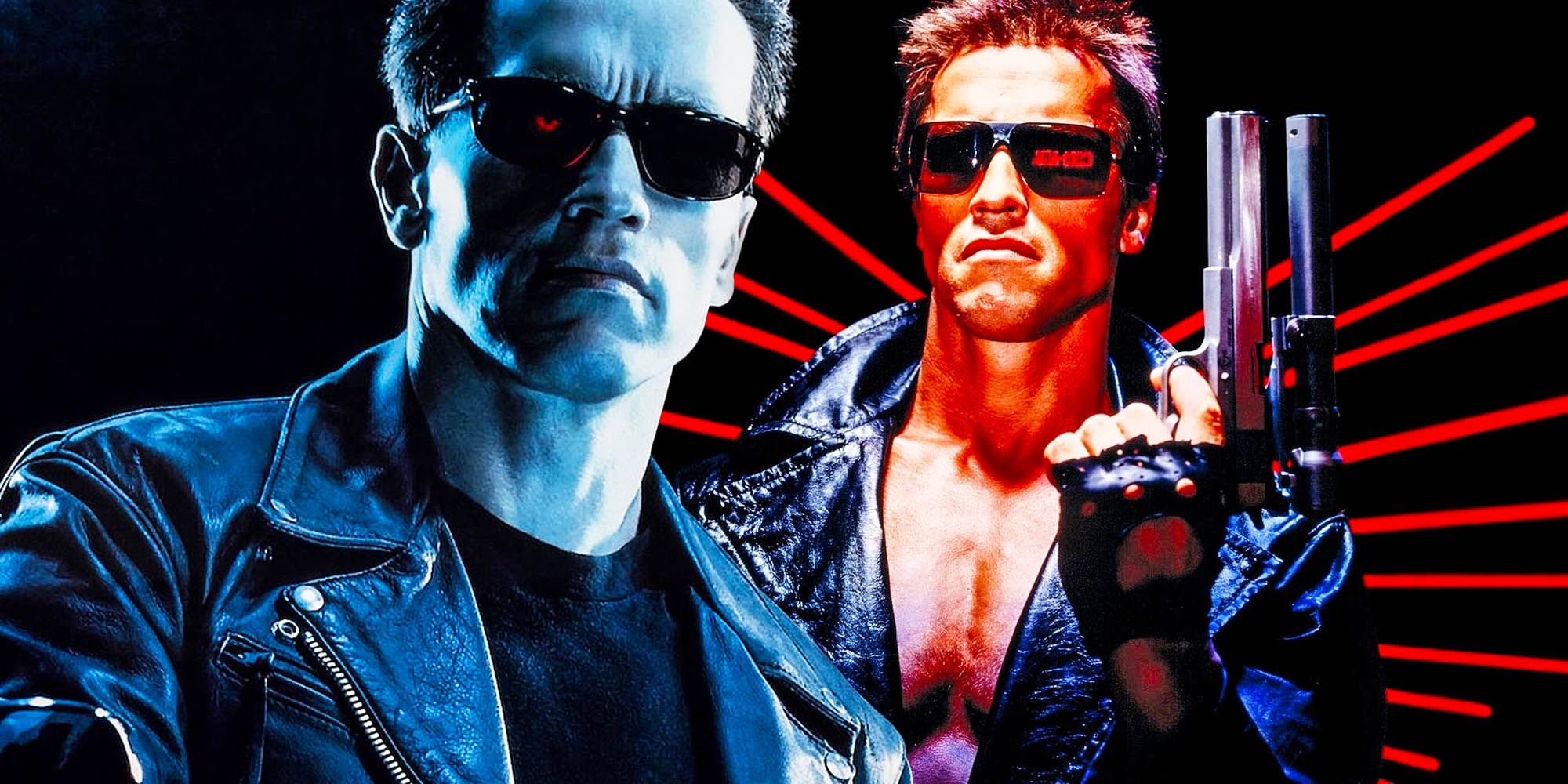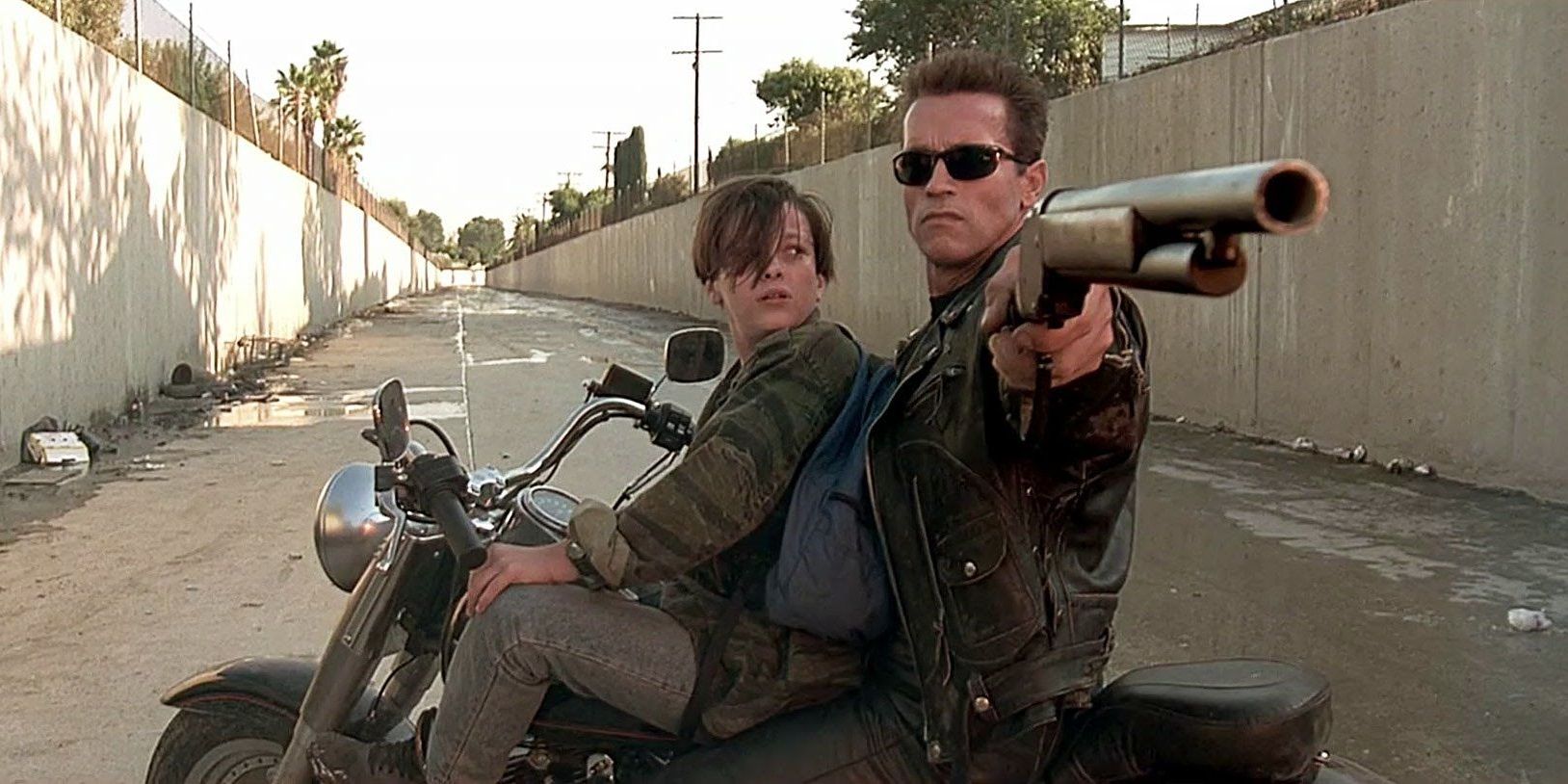Arnold Schwarzenegger’s T-800 is one of cinema’s greatest villains, but in Terminator 2: Judgment Day, writer/director James Cameron switched this iconic character to become a hero. 1984’s sci-fi classic The Terminator has Schwarzenegger playing a cyborg assassin sent back in time from an apocalyptic future where machines have taken over to kill Sarah Connor (Linda Hamilton), the mother of the future’s resistance leader John. Arnie was already a rising star thanks to 1982’s Conan the Barbarian, but The Terminator’s success cemented his status as a leading man.
By the time of T2’s release in 1991, Schwarzenegger had dominated the box office for 7 years, starring in such action blockbusters as Commando and Total Recall, as well as hit comedies Twins and Kindergarten Cop. While the Terminator would remain his signature role, audiences now saw him as the hero rather than the villain; someone to cheer for and save the day. Cameron decided to play with this perception vs expectation while writing the sequel, keeping the T-800’s mission as protector of John Connor (Edward Furlong) hidden for the majority of the first act and the marketing.
Once the ‘protector’ status of the T-800 is revealed, Schwarzenegger’s established presence as a cinematic hero gives the audience a subliminal shortcut to get on board with this sudden turn. Meanwhile, the villain role was given to Robert Patrick’s liquid metal T-1000. This more advanced Terminator was faster, stronger, and practically unstoppable, serving as the perfect antagonist from a storytelling perspective. Despite being smaller in stature than Arnie, Patrick’s unnerving performance manages to sell the idea the T-800 is outdated and outmatched in comparison; Schwarzenegger becomes the underdog, giving the audience even more reason to root for him.
This change also adds value from a plot perspective. While exploring some grand and original concepts, at its core, the original Terminator film is essentially a chase/horror film with an unforgettable boogeyman. The sequel however expands the scope and scale, adding significant depth and human emotion between the characters. The Terminator becomes a father figure to John Connor, and the audience shares in this journey. He switches from a monster that can’t be bargained with or reasoned with to representing hope for the future by learning the value of human life. That is a compelling narrative, and one unique to this series (similar progression for other movie monsters of the time such as Freddy Krueger, Jason Voorhees or Leatherface just wouldn’t work).
Of course, the T-800 wasn’t the only character to be reinvented, with Sarah Connor’s role reversal from scared survivor to battle-hardened warrior mirroring the change to Arnie’s character and giving cinema one of its best heroines in the process. Both these changes perfectly represent the sequel’s notion that “there is no fate but what we make”. James Cameron’s instincts to expand the story by switching both character’s roles were correct, although he also admitted he was concerned about younger viewers seeing the original Terminator as a heroic figure in light of Arnie's subsequent stardom. This is another reason he made the T-800 a good guy who never actually kills another human character in the follow-up. Audiences clearly didn't mind, with Terminator 2: Judgment Day becoming a huge critical and financial hit and considered by many as one of the greatest sequels of all time.


